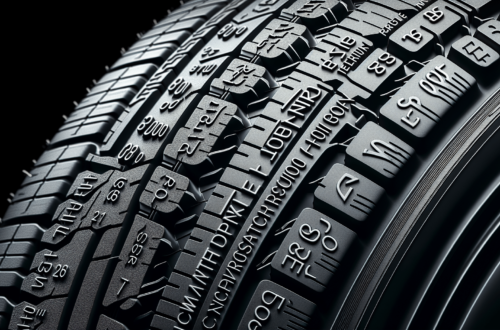Have you ever wondered what those numbers and letters on your car tires actually mean? Tire load ratings, although often overlooked, play a crucial role in ensuring your vehicle’s safety and performance. This article aims to unravel the complexity of tire load ratings, providing you with a deeper understanding of how they are calculated and what they signify. By gaining insight into this important aspect of tire specifications, you will be better equipped to make informed decisions when it comes to choosing the right tires for your vehicle. So, let’s dive into the intricacies of tire load ratings and unlock the knowledge to enhance your driving experience.

This image is property of images.unsplash.com.
What are Tire Load Ratings?
Definition
Tire load ratings refer to the maximum weight that a tire can safely carry. It is represented by a numerical code, known as the load index, which can be found on the sidewall of a tire. This code corresponds to a specific weight capacity for the tire.
Purpose
The purpose of tire load ratings is to ensure that vehicles are equipped with tires that can handle the weight they are subjected to. By understanding and adhering to the appropriate load rating for a vehicle, you can ensure optimal safety, performance, and longevity of your tires.
Interpreting Tire Load Ratings
Load Index
The load index is a numerical value that corresponds to the weight-carrying capacity of a tire. The higher the load index number, the higher the tire’s carrying capacity. For example, a tire with a load index of 80 can carry up to 992 pounds, while a tire with a load index of 110 can carry up to 2,337 pounds.
Load Range
Load range is another indicator of a tire’s load-carrying capacity. It is represented by a letter, such as B, C, D, or E. Each load range corresponds to a specific range of load indices and carrying capacities. For example, a tire with a load range of C can carry more weight than a tire with a load range of B.
Load Carrying Capacity
The load carrying capacity of a tire refers to the maximum weight it can safely carry under ideal conditions. It is determined by the load index and load range of the tire. It is crucial to ensure that the load carrying capacity of your tires is greater than or equal to the weight of your vehicle and its load.
Factors Influencing Tire Load Ratings
Tire Construction
The construction of a tire plays a significant role in its load-carrying capacity. Tires designed for heavier loads typically have stronger casings, reinforced sidewalls, and more durable materials. It is essential to choose tires with the appropriate construction for your vehicle and its intended use.
Tire Size
Tire size also influences the load rating. Larger tires often have higher load ratings due to their increased surface area and stronger construction. Choosing the correct tire size is crucial for maintaining safe load-carrying capacity and overall vehicle performance.
Inflation Pressure
Proper tire inflation is essential for maintaining the necessary load-carrying capacity. Underinflated tires can lead to excessive flexing and heat buildup, which can result in tire failure and reduced load-carrying capacity. Regularly checking and maintaining the recommended tire pressure is vital to ensure optimal load ratings.
Understanding Load Index
Load Index Chart
A load index chart is a tool that helps interpret the load-carrying capacity of tires based on their load index values. It provides a comprehensive list of load index numbers and their corresponding weight capacities. By referring to a load index chart, you can quickly determine the load-carrying capacity of a tire based on its load index code.
Load Carrying Capacity Calculation
To calculate the load-carrying capacity of a tire, you need to know the load index and the load range. By using a specific formula provided by tire manufacturers, you can determine the maximum weight the tire can safely carry. It is crucial to note that load carrying capacity calculations should only be performed by professionals or in consultation with tire experts.

This image is property of images.unsplash.com.
Different Load Ranges
P-metric
P-metric tires are primarily used in passenger vehicles and have specific load ranges. These tires are designed for light to moderate loads and can handle the weight typically associated with everyday driving. P-metric tires provide a smooth and comfortable ride for vehicles with lower load-carrying requirements.
LT-metric
LT-metric tires, commonly known as Light Truck tires, are engineered to handle heavier loads compared to P-metric tires. They are primarily used in light trucks, SUVs, and other vehicles that require enhanced load-carrying capacity. LT-metric tires are designed to withstand the demands of off-road driving and towing.
Commercial
Commercial tires are specifically designed for heavy-duty vehicles, such as delivery trucks, buses, and commercial vans. These tires have the highest load-carrying capacity and are built to withstand demanding commercial applications. Commercial tires ensure the safe transportation of heavy loads while offering excellent durability and longevity.
Load Carrying Capacity Calculation
Single Tire
Calculating the load carrying capacity of a single tire involves multiplying the load index by a factor provided by the tire manufacturer. The resulting value represents the maximum weight the tire can safely carry under ideal conditions. It is important to note that this calculation does not take into account other factors such as tire size, inflation pressure, or vehicle weight distribution.
Dual Tire
When dealing with dual tires, such as those found on rear axles of trucks and some larger vehicles, the load carrying capacity is calculated using a different formula. This calculation takes into account the load index and load range of each tire, as well as their position on the vehicle. Dual tire load carrying capacity is typically higher than that of a single tire, but it is crucial to ensure that all tires have sufficient load capacity to handle the weight of the vehicle.

This image is property of images.unsplash.com.
Implications of Incorrect Load Ratings
Safety Risks
Using tires with load ratings below the vehicle’s weight requirements can pose significant safety risks. The tires may become overloaded, leading to increased heat buildup, decreased traction, and a higher risk of tire failure. Underestimating load ratings can compromise vehicle stability, handling, and braking performance, jeopardizing the safety of you and your passengers.
Tire Damage
Insufficient load ratings can cause excessive stress on tires, leading to accelerated wear and tear. Overloading tires can result in sidewall bulges, tread separation, blowouts, and other forms of tire damage. The reduced load-carrying capacity can also increase the likelihood of tire punctures and impact resistance. Choosing tires with appropriate load ratings helps prevent unnecessary tire damage and extends their overall lifespan.
Reduced Performance
Operating a vehicle with tires that do not meet the required load ratings can result in reduced performance. The tires may experience increased rolling resistance, leading to decreased fuel efficiency and slower acceleration. Furthermore, compromised load ratings can negatively impact the vehicle’s handling, braking, and overall responsiveness. Adhering to the correct load ratings ensures optimal performance and driving experience.
Matching Load Ratings to Vehicle Requirements
Consulting Vehicle Owner’s Manual
The vehicle owner’s manual provides valuable information regarding the appropriate load ratings for your specific vehicle. It specifies the recommended load index, load range, and other tire specifications necessary for safe operation. Always consult the owner’s manual to ensure accurate load rating compatibility.
Considering Vehicle Weight Distribution
Besides the overall weight of the vehicle, it is crucial to consider weight distribution when determining appropriate load ratings. Uneven weight distribution can result in imbalanced load ratings among tires, leading to excessive stress on certain tires. Proper weight distribution helps maintain optimal load-carrying capacity and ensures uniform tire wear.
Understanding Load Index Adaptation
Load index adaptation refers to adjusting the load index of a tire when selecting replacements. In some cases, a higher load index tire than the original equipment may be needed due to modifications or increased load requirements. However, load index adaptation should only be done in consultation with tire experts to ensure proper load-carrying capacity and safety.
Load Ratings for Specific Applications
Passenger Vehicles
For passenger vehicles, such as sedans, hatchbacks, and SUVs, P-metric tires with appropriate load ratings are typically recommended. These tires provide a smooth and comfortable ride while meeting the load-carrying requirements associated with regular driving.
Light Trucks
Light trucks, including pickup trucks and SUVs, often require tires with higher load-carrying capacities. LT-metric tires are designed to handle the increased weight of these vehicles, especially when used for towing, hauling, or off-road applications. LT-metric tires offer enhanced durability and reliability for light trucks.
Commercial Vehicles
Commercial vehicles, such as delivery trucks, vans, and buses, demand tires with the highest load-carrying capacities. Commercial tires are specifically engineered to handle heavy loads, frequent stops, and rigorous operating conditions. These tires ensure the safe transportation of goods and passengers while providing exceptional durability and performance.
Importance of Regular Tire Inspections
Visual Checks
Regular visual inspections of your tires are essential for detecting signs of damage, wear, or other issues that may affect load ratings. Check for bulges, cracks, tread wear patterns, and any other abnormalities. Addressing these issues promptly can help prevent potential load rating deficiencies and ensure optimal tire performance.
Load Rating Verification
During tire inspections or maintenance, it is vital to verify that the load ratings of your tires match the requirements of your vehicle. Compare the load index and load range on your tires to the specifications outlined in the vehicle owner’s manual. Any discrepancies should be addressed by consulting with tire professionals to ensure that your tires can handle the intended loads.
In conclusion, understanding tire load ratings is critical for maintaining optimal safety, performance, and longevity of your tires. By considering factors such as load index, load range, tire construction, size, and inflation pressure, you can ensure that your tires are suited for the weight they are subjected to. Matching load ratings to vehicle requirements, performing regular tire inspections, and adhering to the specifications outlined in the owner’s manual are essential for safe and reliable driving. Always consult with tire professionals for any specific load rating concerns or adaptations for your vehicle’s unique needs.





